If you’re gonna buy one comic this week, it better be Star Trek/Planet of the Apes #1, from IDW and Boom! We talk with co-writer Scott Tipton all about it.
It is a very light week for comics, the lightest of the year. But there’s one book that I absolutely, positively cannot wait for and that’s Star Trek/Planet of the Apes, which is brilliantly subtitled The Primate Directive. This is an idea that not is only almost half a century overdue but one that requires absolutely no explanation. The title says it all: The crew of the Enterprise encounters the Planet of the Apes. That’s all you need to know.
Scott Tipton, who is writing the series with his older brother David — they recently completed the outstanding Harlan Ellison City on the Edge of Forever adaptation — is a regular in these parts as a member of our weekly HOT PICKS crew. So Scott and I took a little time to pretty much shoot the bull about the two greatest sci-fi franchises to come out of the gloriously creative 1960s in this MIGHTY Q&A:
Dan Greenfield: OK, so which came first for you, Planet of the Apes or Star Trek. How did you discover each?
Scott Tipton: Not too coincidentally, the answers are the same for both: KTVU and Mego.
Growing up in the San Francisco Bay Area, local station KTVU Channel 2 aired Star Trek every day at 5 pm throughout most of my childhood, so watching Trek at dinner with my family was practically a nightly affair. KTVU also aired the Apes movies regularly, both throughout the year and usually in marathons during the summers. I recall especially once when Roddy McDowall got back in the Apes makeup to record introductions for the films.
At the same time, I was a huge fan of Mego‘s 8-inch action figure toys, primarily the super-hero line, but I was also very taken with the Star Trek and Apes product lines, as was my brother. I collected the Star Treks, while Dave collected the Apes (which means I’ve been having to put together my own Mego Apes collection recently…)
Dan Greenfield: See, for me it’s the opposite. I grew up with the Apes but I didn’t really discover Star Trek until I was almost an adult.
I grew up in New Jersey and our local stations were the New York ones. On Channel 7 was The 4:30 Movie, and they had theme weeks and the big one was Apes Week. (They also had Superhero Week, but that was usually only good for the first two days when they’d run the ’66 Batman movie in two parts.) They’d split the first movie into two, then run the next three. So I never saw much of Battle.
Plus, the movies would run in prime-time, too, and sometimes late night. My friends and I were into Apes, with the Megos and trading cards and the whole bit. So it was something I grew up with. This was the mid-’70s when I was in second and third grades.
Star Trek, on the other hand was something that was, pardon the phrase, fairly alien to me. My folks split when I was young and I remember my Dad would watch it sometimes when we’d visit and it just bored me silly. I do remember him once pointing out that some guy in a red shirt was going to be killed. “How do you know?” I asked. And he answered, “The guys in the red shirts always get killed. They’re not the main characters.” The term Redshirt hadn’t even been around yet.
As a teen, I discovered the movies and I liked them but the big change for me was in the summer of 1986, the one after my freshman year in college. Channel 11 ran the show and it was at 11:00 or 11:30 every night, Monday through Friday. I couldn’t tell you why but I started watching every night — and It became the highlight of that summer. Every night, without fail, I would watch Star Trek and then I was hooked. The books, comics, etc., all followed.
How was it that you ended up splitting Apes and Star Trek like that with your brother?
Scott Tipton: I don’t even know how it was that the Trek/Apes split evolved that way, it just did. Plus, we were never particularly partisan about our stuff, so it wasn’t as if either was off limits to the other. I do think Dave has more of an affinity for the Apes stuff, which makes sense since he was older and would have had longer to really be fascinated by those movies.
Both of those Mego product lines are really well done, between the costume detail and the playsets. There was a lot to like. I just found and restored a Mego Apes Fortress set for myself not long ago.
Dan Greenfield: I agree on the Megos, for sure. I only had Zaius and Cornelius as a kid but I’ve since filled out the line with the recreations. I also now own a number of the Star Trek recreations, as well.
Focusing on Star Trek first, are you first and foremost an Original Series guy or are you into the later series, etc.? Tell me more of your Star Trek bona fides.
Scott Tipton: I was raised on the Original Series, but watched all of the other series contemporaneously as they aired. There are things I love about all the series (even the much-maligned Enterprise), but if I had to pick a true favorite it would probably be classic Original Series, though you may catch me in a different mood on another day and I could well say Next Generation. Next Generation may be the easiest for me to write, I think because there were so many more episodes than Classic and I watched them as they were produced, so those voices are somewhat burned into my subconscious.
Dan: Tell me how you ended up writing Star Trek. And what was that like when you first got those gigs?
Scott: The cliche always goes that it’s about being in the right place at the right time, but that’s only part of it — you have to in the right place at the right time, and be ready when that opportunity comes along.
I was already writing for IDW in late 2006 when they got the Star Trek license, working on their Angel comics. Once the news was out, I called up Chris Ryall, IDW‘s editor-in-chief, whom I’d been working with on the Angel books, and said, “This is all me. I got this. I’m not saying give me the job, just open the door a crack and let me pitch, I’ll take care of the rest.”
One of the first projects IDW and CBS (Trek‘s corporate overlords) wanted to do was a Klingons series. I wrote up a proposal, everybody liked it and we were off to the races. That was also when I recruited my brother David to come in and write with me. We have very similar ideas about what makes a good Star Trek story, and he’s the only person I know who’s more Trek-knowledgeable than me, so I knew I’d be constantly bugging him all through the process, so, I told him, why not write it with me and make it official? If after this first project you don’t like it, don’t do it again. So that worked out pretty well, obviously.
And also, on that first project, Blood Will Tell, I got to carry over the same artist I’d been working on Angel with, David Messina. So there wasn’t even a lot of nervousness about it — I’d already been working with Messina for a year, with great satisfaction, and we just rolled right into the new series and new license without a hitch.
And from there, we’ve been working steadily for IDW and CBS ever since, on pretty much every type of Trek property there is. My tenure here also led to my writing some other great projects like The Star Trek Vault and Pride of the Fleet, the Build-Your-Own-Enterprise book, so I can’t complain.
Dan: Since you brought it up, what makes a good Star Trek story? For me, it has to be humanistic and adventurous with a sense of humor. You can get away without one of these ingredients but for not for long. I think it’s still why I think the first series is still the best one. But then I also like that cheesy factor — a lot. The colors, the sets, the effects, the hamminess. All of those appeal to me a great deal, aesthetically.
Scott: It can’t just be about itself, either. It’s so tempting to just want to delve into that rich history and continuity that’s been built and wallow around in it, but Star Trek was at its best always about something more, a way to comment on today’s world through allegory in this futuristic setting. One of my favorite Trek projects was The Burden of Knowledge, a TOS miniseries we did where we really tried to capture that Original Series feel of tackling contemporary issues through the lens of the Star Trek universe.
We also really try to handle every script as if it could have been filmed as an episode. If it’s not something the producers of the series would have done, it doesn’t work for us. That doesn’t mean you can’t go wilder with aliens or starships or what-have-you that would have been beyond the budgets or capabilities of television production, but the core of it, the story itself, has to be something that would have fit in the mood and tenor of the series.
Dan: I think that’s the key to telling those stories — they have to feel like they’re part of that universe. So let’s get fanboyish again for a minute: Which stories from the Original Series are your favorites? And do you prefer the stories that focus on Kirk or Spock — or the three main guys playing off each other?
Scott: I’m a big fan of the comedies, like Tribbles, Piece of the Action and I, Mudd, just because they show off the versatility of both the series and the cast. Obviously, City on the Edge of Forever. Any episode where Kirk had a really good antagonist to play against, like Space Seed, The Changeling, Errand of Mercy or Whom Gods Destroy. Court Martial I like a lot, with that amazing guest turn by Elisha Cook Jr. Mirror, Mirror is a great piece of science fiction, and a great showcase for the extended cast. I could go on all afternoon.
I think McCoy adds the perfect balance to the Kirk/Spock dynamic, which is why once the producers realized the chemistry was clicking, he was made a regular almost immediately.
Dan: Piece of the Action is one of the most underrated episodes. Cracks me up every time. I’m also a huge fan of Balance of Terror and Amok Time. Star Trek gold.
How much Kirk Fu are we gonna see in ST/POTA? I mean, if we don’t get Kirk with the clasped-hand punch against some damn, dirty apes, I just don’t wanna say …
Scott: Funny you should mention the double-fist hammer punch, I was just pulling reference for that move last night…
But yeah, you can expect there to be a fair amount of action, certainly. Much more so than the later Trek series, TOS was kind of an action-drama, so I like to keep things lively.
Dan: Putting aside the evolutionary question of whether the Vulcan neck pinch would work on Dr. Zaius, I’m intrigued by the Kirk/Taylor dynamic. Because when it comes to ’60s sci-fi, they are the two most prominent protagonists, yet their influences and worldviews are diametrically opposed.
In Kirk, you have the quintessential manifestation of Kennedy’s New Frontier. The can-do, pioneer spirit. The eternal optimist. The guy who doesn’t believe in the no-win scenario. He goes to space because he wants to boldly go where no man has gone before.
Then there’s Taylor, who’s not just a pessimist, he’s fatalistic. This is an antihero for the Vietnam/Johnson/Nixon era. He leaves Earth because he believes that somewhere in the universe, there must be something better than man. He hectors Landon for basically being that story’s Kirk figure. And when he finds out that there isn’t anything better, he’s the guy who ultimately pushes the plunger and destroys the world.
How much of that philosophy is playing into this story?
Scott: You hit it right on the nose. That dynamic is central to the story and their relationship; maybe not explicitly, but in their conflict and the way they respond to each other. That contrast between the optimism of Trek and the pessimism of POTA is what made this whole project so fascinating for me (and is also the topic of one of our supplemental essays by Dana Gould, by the way.)
Dan: Great minds! Let’s talk about POTA a little. Which is your favorite flick?
Scott: It’s got to be the original. It’s just about a perfect movie, if you ask me, in terms of plotting, pacing, acting and effects. There’s no better ending in all of science fiction. Heston anchors it, and it has to be said what a risk he was taking with such an outlandish premise, not to mention running around mostly naked for most of the film. It’s a great performance, equaled by Roddy McDowell, Kim Hunter and Maurice Evans, who bring those heavy makeup appliances to life in a way that had never been seen before, and hold up against all your fancy-pants motion-capture acting of today.
Beneath runs a strong second, just for taking the kinds of chances it does and being the absolute bleakest sequel I’ve ever seen. By the time you get to the third act, that movie just sits on your chest and doesn’t let up for a second. I like that.
Dan: I myself have always leaned toward those first two movies, even though Beneath is a bizarre turn off the path. But the first one itself is magnifcent and I agree with what you say about the plotting, pacing, etc.
I wish I’d gotten to see it spoiler-free. I like to wonder what it would have been like and whether I would have figured out the twist before we see the Statue of Liberty. I kind of think I would once they got into the cave, but it’s fun to speculate. And I always get excited whenever I see Point Dume show up in another movie or TV show.
OK, let’s get down to it. Gun to head: Star Trek or Planet of the Apes — and why?
Scott: Can’t do it. I’m too absorbed in both right now. It’s Sophie’s Choice. Ask me in a year.
—
Star Trek/Planet of the Apes: The Primate Directive #1 comes out 12/31, jointly published by IDW, the holder of the Trek license, and Boom! Studios, the holder of the Planet of the Apes license.

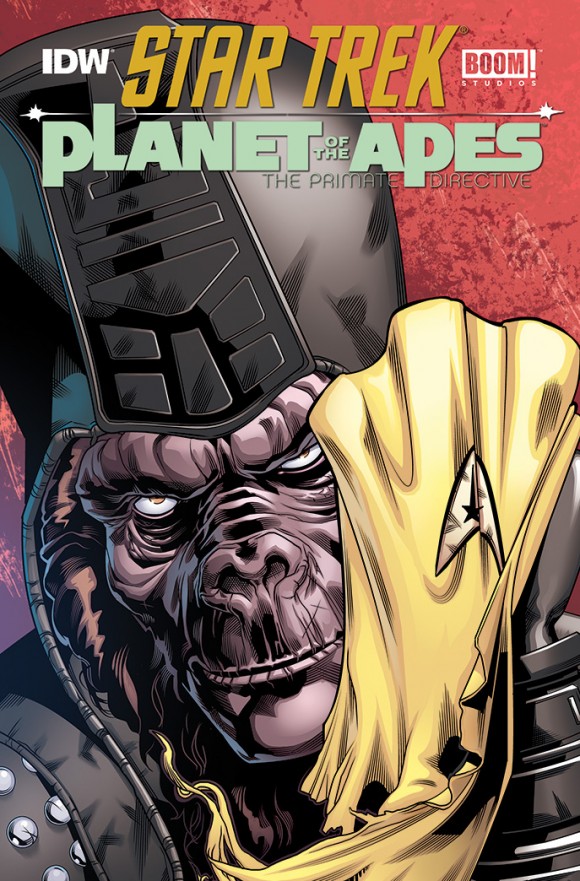
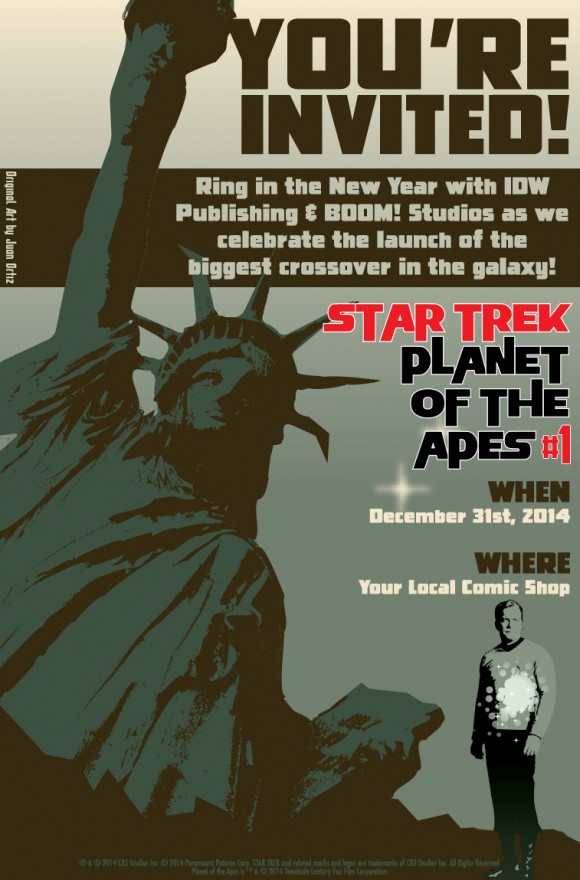
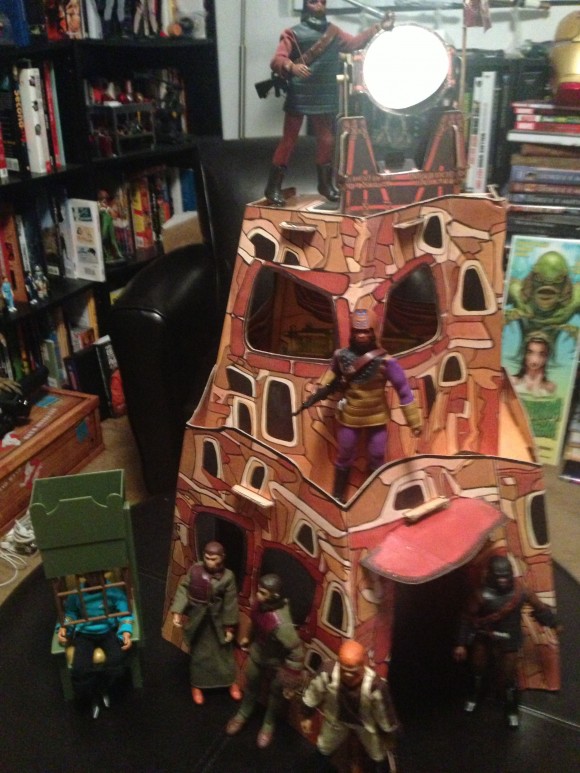
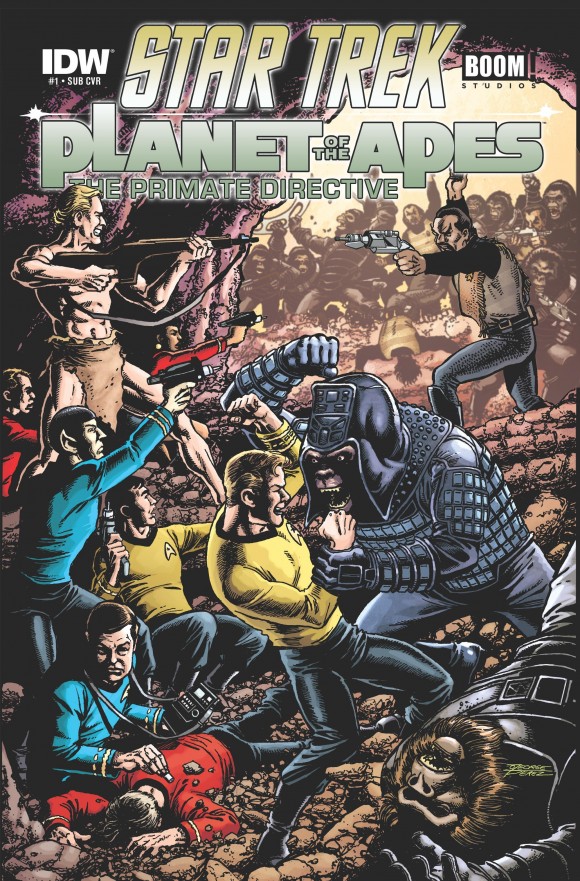
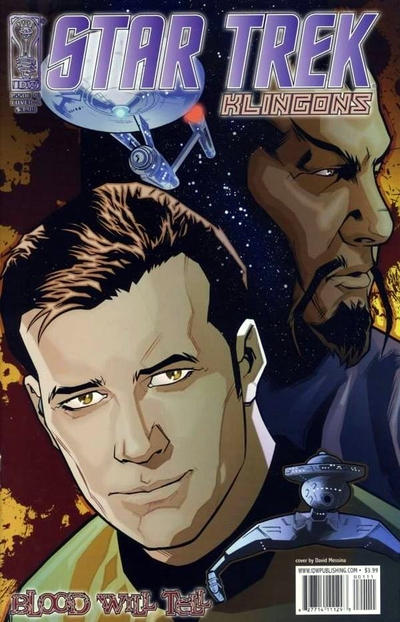
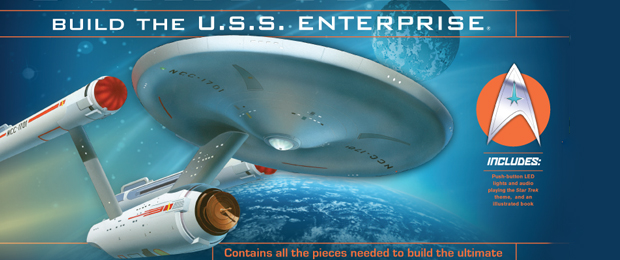
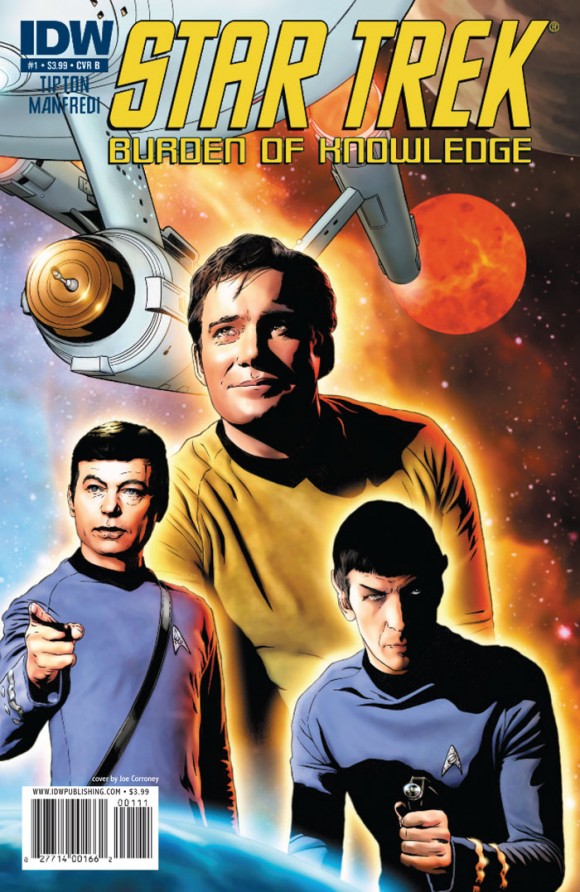
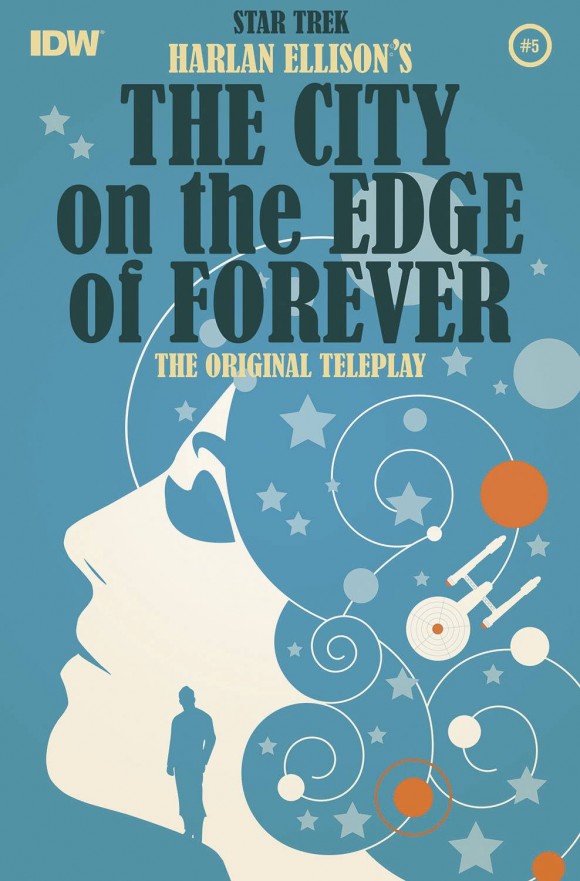
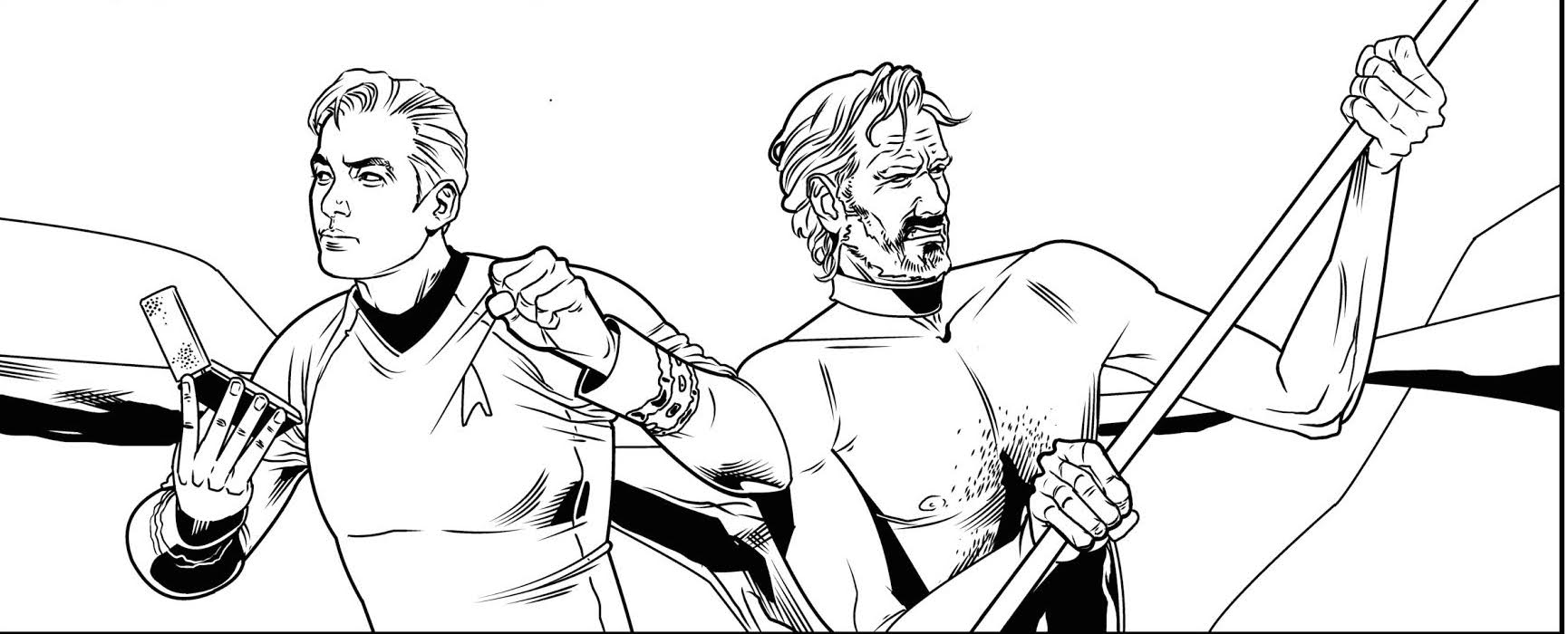
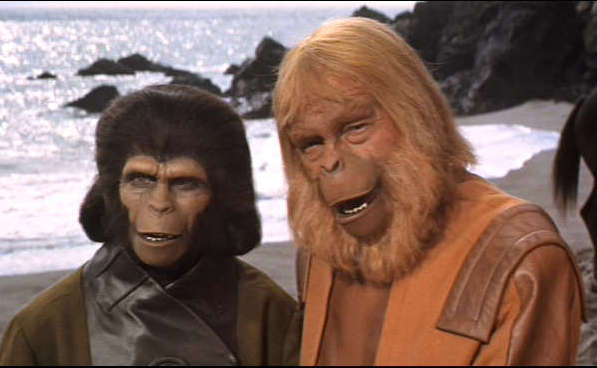
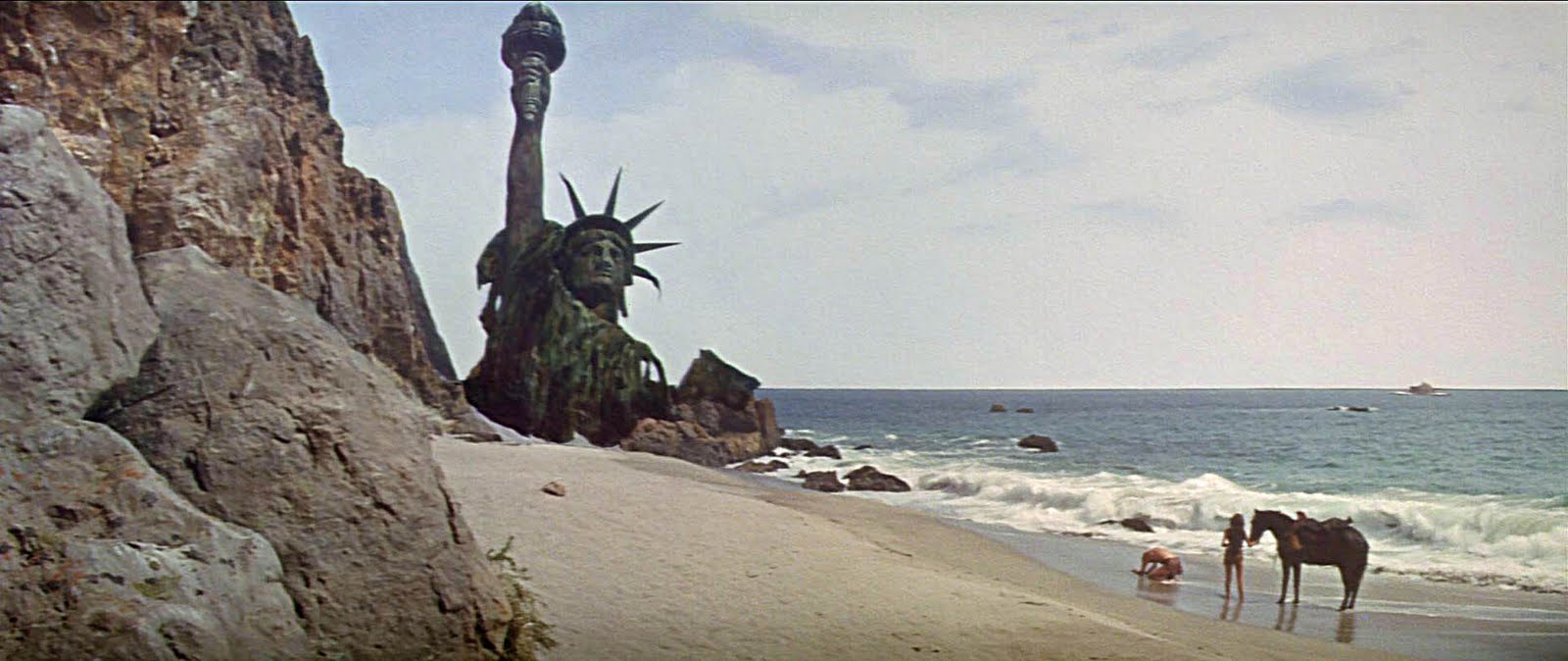
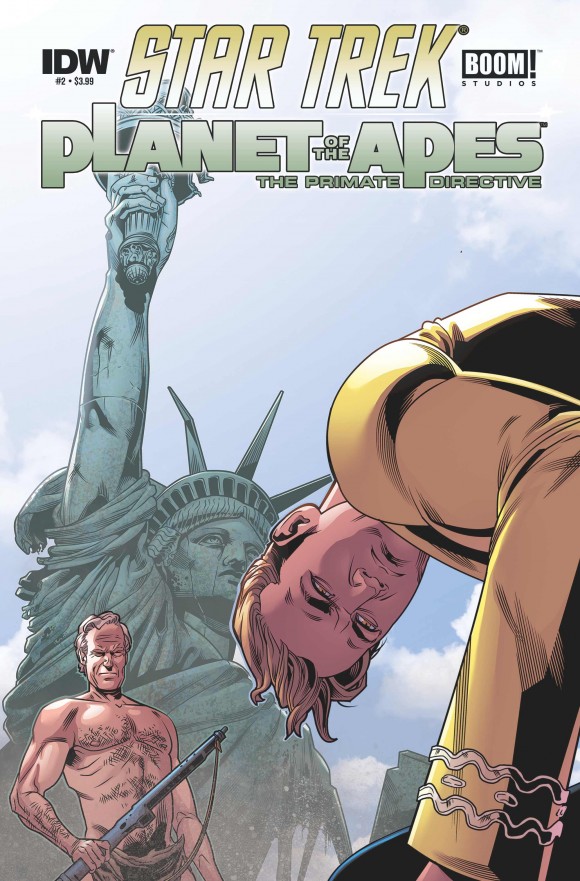
Trackbacks/Pingbacks